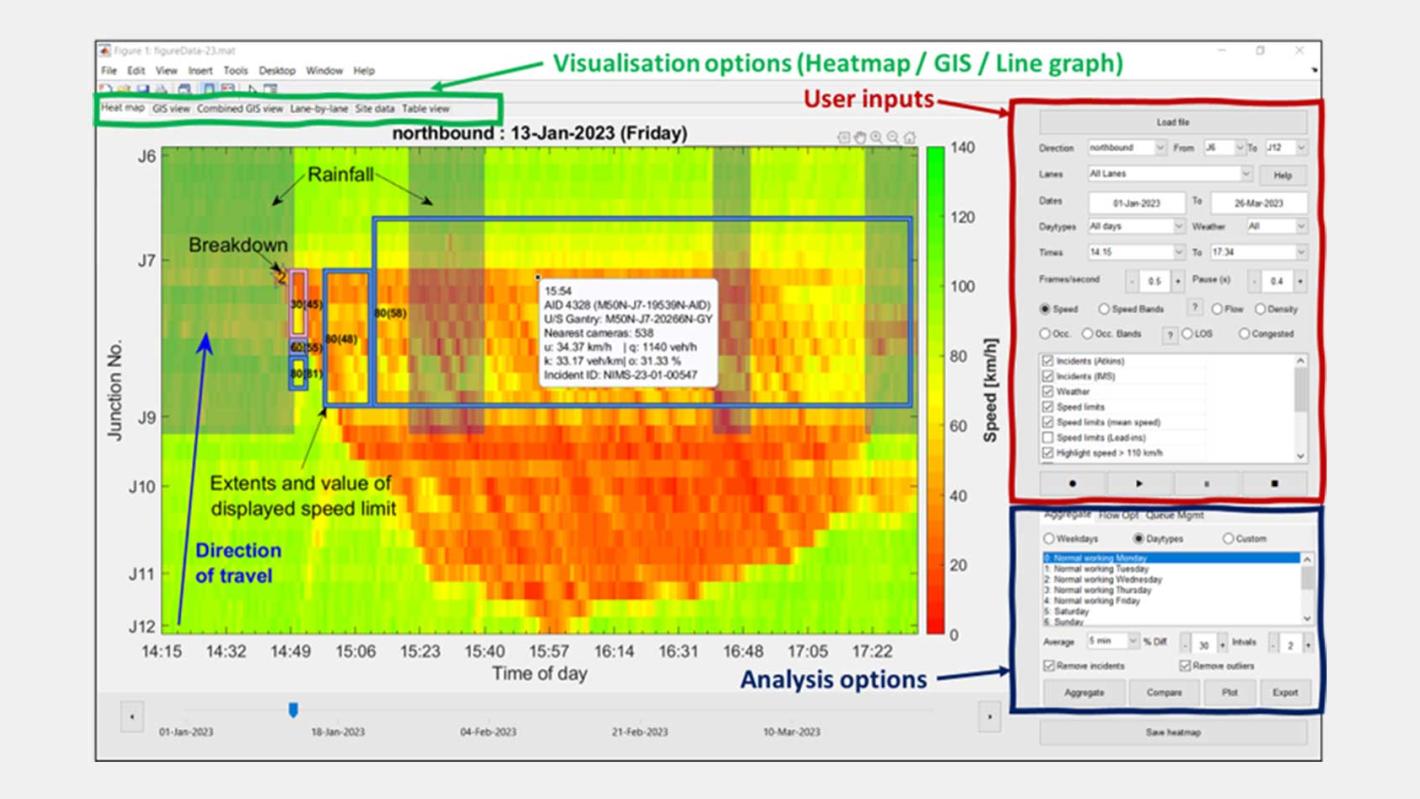
Software interface for the visualisation and analysis of M50 traffic data.
ROD deploys its expertise in large-scale data analytics to provide TII’s operations team with enhanced insights into traffic behaviour on the M50 motorway
ROD is providing Transport Infrastructure Ireland (TII) with advanced data analytics services to enhance its understanding of the complexities of the motorway network and enable it to provide a more integrated road management service to road users. The work is being undertaken as part of the enhancing Motorway Operation Services (eMOS) programme.
The roll out of variable speed limits (VSL) and lane control signalling (LCS) technology across the M50 is adding substantially to the traffic speed, traffic flow and journey time information being collected through intelligent transport systems (ITS) equipment already installed on the motorway.
Leveraging the data is key to providing TII with a deeper understanding of daily traffic conditions on the M50 and enabling it to develop suitable operational response procedures such that speed limits and warning messages reflective of real-time conditions on the motorway can be displayed to road users during periods of heavy congestion or when incidents occur on the network, for example.
ROD has developed a software tool, with a customised user interface, to visualise large traffic speed datasets, revealing congestion patterns and allowing post-incident reviews of delays and queue lengths to be undertaken.
The image above shows the interface displaying traffic data recorded at 20s intervals every 500m along the M50. The visualisation can display in heatmap format, showing both time and location, or on a GIS map, showing the development of congestion over time.
The software allows different data sources to be amalgamated or analysed in parallel. For example, weather data from TII’s weather stations can be overlaid on the traffic data to examine the influence of rainfall or other extreme weather on traffic conditions. Details of motorway incidents or the speeds displayed on the overhead digital signs can also be overlaid to allow the impact on traffic to be visualised.
The software has been particularly useful in:
The team has also been leveraging its expertise in probabilistic methods to examine the relationship between speed and flow at all locations on the M50. These methods can be employed to predict the onset of congestion levels that will trigger the switching on of variable speed limits. They can also assist with the calibration of the algorithms that automate the setting of speed limits and variable message signs.
The software developed by our team uses real, measured traffic data collected from sensors in the road to calibrate the theoretical relationships governing traffic flow.
This allows the team to recognise the conditions that cause traffic flow to move from a free-flowing state to a congested state and identify the appropriate point at which speeds should change in response to real-time traffic conditions on the motorway.
The data will be used to examine the impact introducing VSL and LCS has on the performance of the M50. The use of VSL during periods of heavy flow is, for example, expected to limit shockwave behaviour, improving road user safety and journey time reliability. The data will allow the benefits to be measured and quantified, and if the desired level of benefit is not being delivered it will inform changes to operational response procedures.
